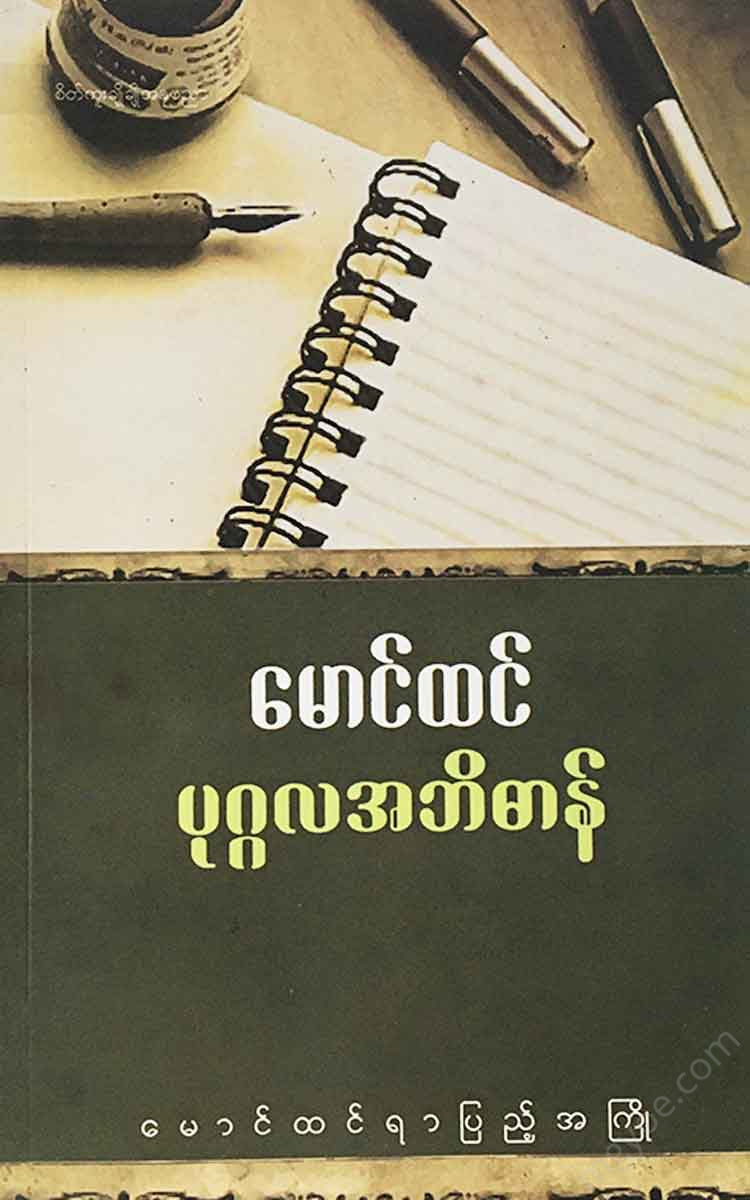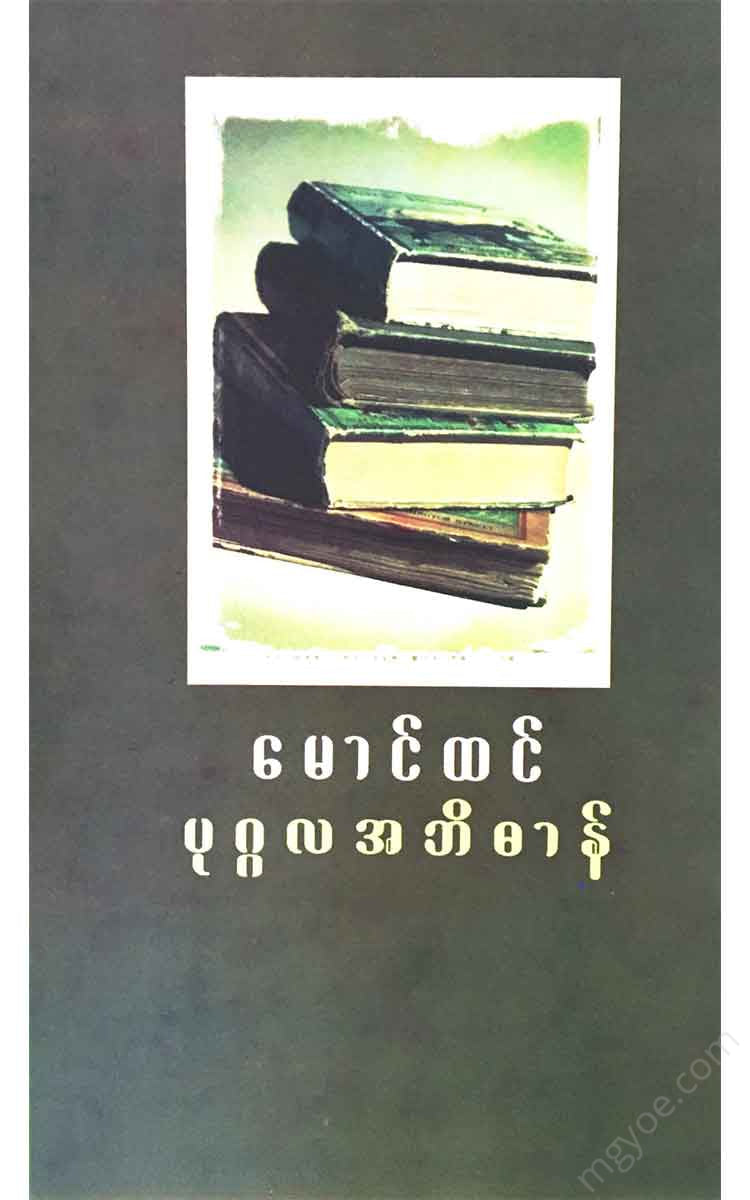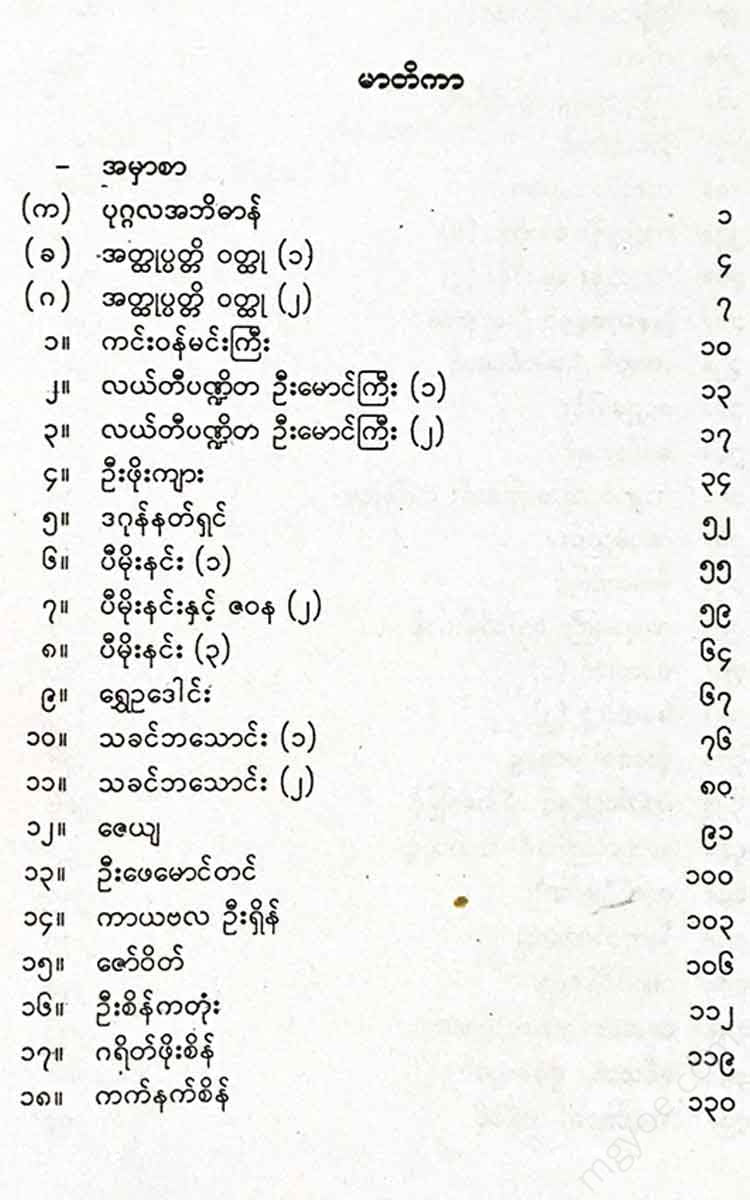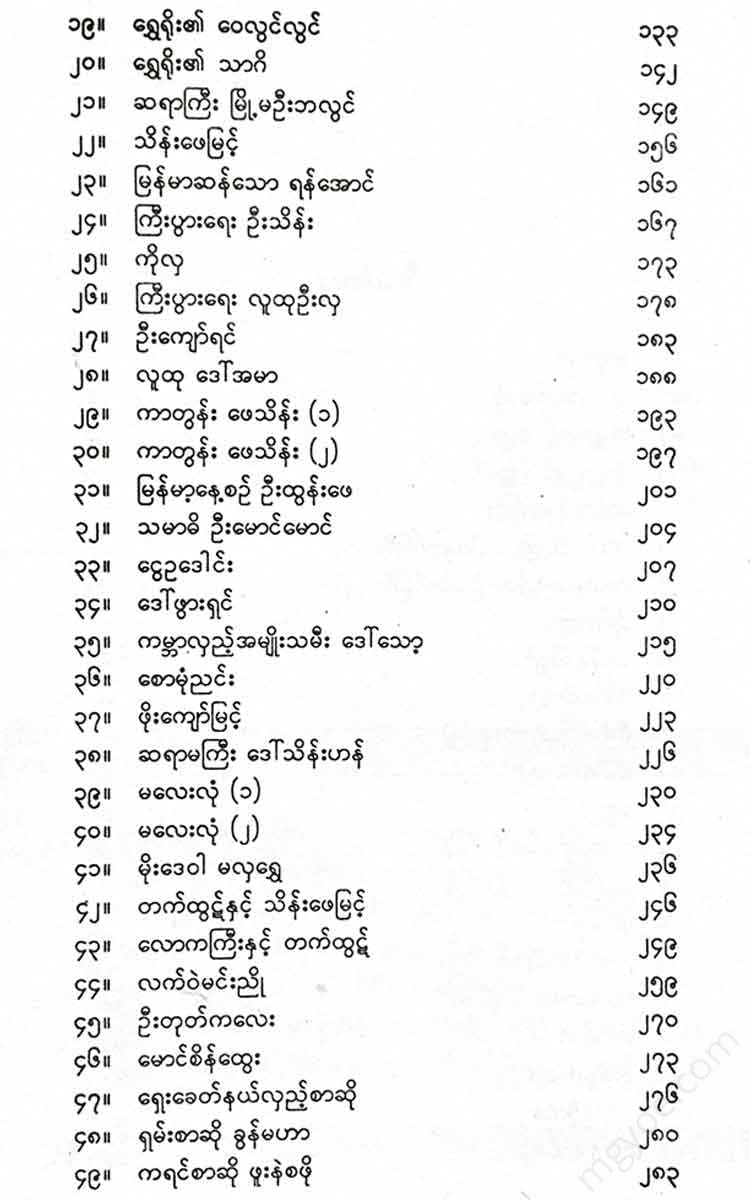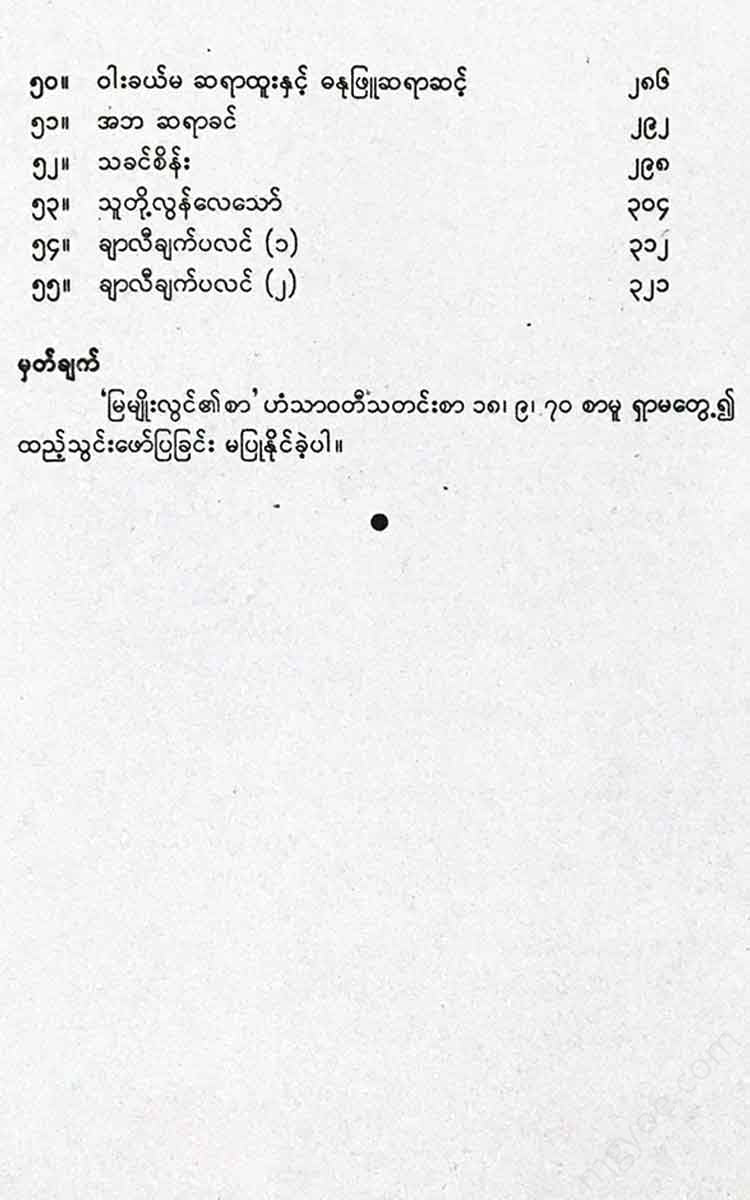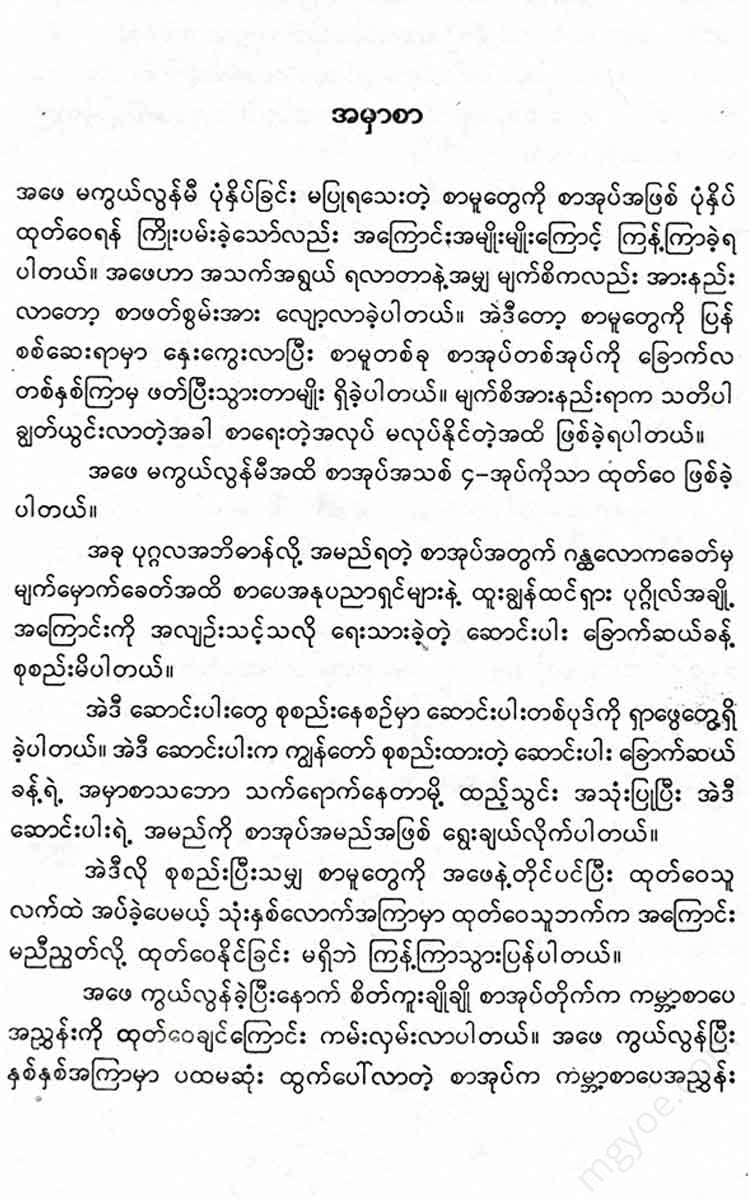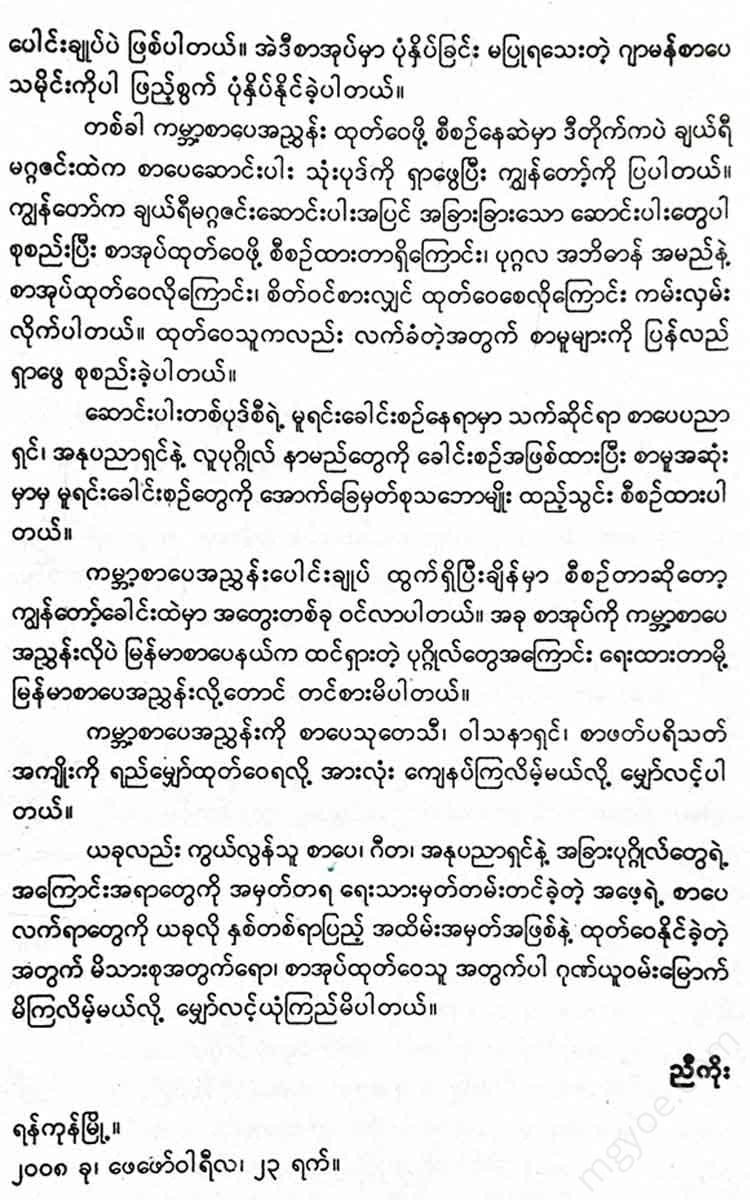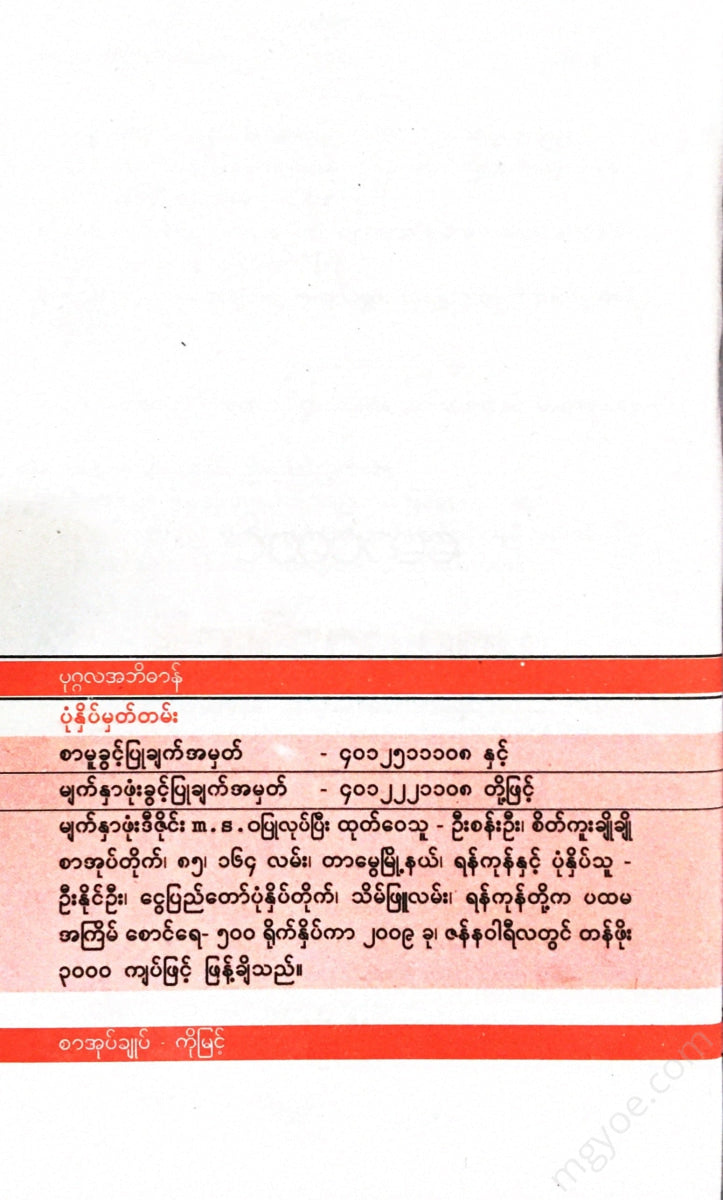စိတ်ကူးချိုချိုစာပေ
Maung Htin - Personal Dictionary
Maung Htin - Personal Dictionary
Couldn't load pickup availability
Personal dictionary
As far as I remember, the term "personal dictionary" was first used by the Minister of National Education, U Pho Kyar.
The stories of individual people are generally called attapatti. When we want to talk about a monk, we use the word therupatti. In fact, the meaning of attapatti is very broad. It is a kind of group that can create a complete picture of the life of a person.
Nowadays, people want to know everything about people related to various functions in their work. Especially when it comes to public servants of the national government, the government always has to keep records of its employees. Especially, the events and circumstances of the employees' service are usually recorded in the "Employee Records".
Following this tradition, a term called "personal information" is widely used in this era. If we look at the origin of the term, we can see that it is a term used by the police station.
In ancient times, there was a custom to record the stories of bad people in history in “files”. The British who ruled over them gave them a name that literally means “historical documents” in Burmese. They also called it “Gyn Pa Ja Win” in Burmese.
If we examine this term with the eyes of today, we will see that it is not appropriate for the times.
At first glance, the word "history" seems to be out of keeping with the times.
I think it would be more appropriate to say and write in the usual Burmese language, "Who is who?" or "Who is who?". Therefore, I think the term "personal information" has become widespread.
In the West, this autobiography is very important in terms of work. People have a desire to know each other in order to deal with the issues they have to deal with in their environment.
As industry grew, the need to know each other grew. So in England, in 1849, the first Who's Who, a concise, self-contained book of personal information, was published.
The purpose of publishing the book was to organize and present the stories of individuals in a dictionary-like manner. It can be said that it is consistent with the personal dictionary used by U Pho Kyar.
This first printed personal dictionary records a list of kings, queens, princes, nobles, and members of parliament.
In 1868, the original owners sold the rights to publish the "Who's Who" book to Adam Black, and Black and his successors continue to operate the business to this day.
The practice of compiling personal dictionaries in Myanmar dates back to the time when the Thuriya Newspaper published annual guidebooks.
As far as I can remember, a year or two before the Second World War, a guidebook called Directory was published. Among the people who contributed to the compilation of that book was U Tun Nyo, who recently passed away. U Tun Nyo was a scholar in the field of education. However, due to circumstances, he had to serve as Director of the Immigration Department, Director of the Information Department, etc.
When Myanmar became independent, the public library, Thakin Kyaw Sein, worked diligently to compile a personal dictionary for Myanmar called “Hu Hu”. At that time, many friends and I helped our friend Thakin Kyaw Sein out of interest. However, we could not afford to revise and publish the personal dictionary every year. One of the difficulties was that the people involved were reluctant to reveal their personal information for the sake of the personal dictionary.
I have personally experienced this kind of difficulty. When I had to write a cover for an encyclopedia, I asked experts and found that most of them were reluctant to help.
However, times have changed. In this era, various types of literary works have also emerged. Various works of prominent living figures can be found in newspapers, journals, and magazines.
In the future, personal dictionaries will become much more widespread. There is no need to exaggerate the usefulness of personal dictionaries in the newspaper industry. Every journalist is well aware of this.
This is also a factor that encourages the development of personal dictionaries.
Hanthawaddy Newspaper - 23, 4, 78
Attakapatti Vutthu (1)
Once upon a time, at a literary seminar at the Sapaya Beemaan, a speaker presented a paper on the subject of Attakapatti literature. At the seminar, they also discussed and criticized Attakapatti written in novels.
The original source of biography and fiction is the description of human affairs. When describing human affairs, a lot of information will appear about the environment surrounding people, the emotions and pains that people experience, the suffering and happiness caused by these emotions and pains, human thoughts, human history, etc. However, no matter how extensive it is, the concept of organizing and forming events and content will be seen as the basis.
In constructing the content, a biography only creates the actual events of a person. Fiction, on the other hand, cannot be an actual event because it is born from the realm of imagination. It only creates the content and events that are imagined and imagined as if they would happen in this way.
However, since they are basically the same, it is reasonable to wonder whether they are fictional stories, even though they are called Attapatti. Although they are not real events, the fictional story is so close to the real event that it is also reasonable to wonder whether they are fictional stories, even though they are called biographies.
Therefore, if you want to write a poem in the style of a biography, you can also write it in the style of a novel. If you want to write a short story in the style of a novel, you can also write it in the style of a novel. A skilled artist can manipulate the external form as he likes, but only the essence of the soul remains, and he can create whatever he wants.
I have been reading fictional biographies lately, so I am writing this article. Among them, I would like to present a brief account of one unique historical account.
Some young people today are “Hla Thaung School graduates.” These school graduates understand the honor and dignity of the name “Hla Thaung.” However, for ordinary citizens, only by retracing the past history will they understand the honor and dignity of that school.
Comrade Hla Thaung is none other than the person who sacrificed his life for his army, for his Union-born ethnic people, and for his country in the Battle of Shan Su Village on April 29, 1949. The state honors this great man who gave his life for his people and country with the Aung San Thuriya Medal.
In the future, the state government established and opened the "Aung San Thuriya Hla Thaung High School" in his name so that the entire Burmese people would not forget Comrade Aung San Thuriya Hla Thaung.
With the desire to reveal this history, Corporal Maung Htoo wrote the book “Aung San Thuriya Hla Thaung.” In writing this book, Corporal Maung Htoo adopted many techniques to keep it close to the truth.
Indeed, Comrade Hla Thaung's story is often heard on the battlefield.
"Floating... Thai... Gold... Pillow..."
These are the reasons that reveal the nature of the sounds and the voices, and in any battle,
It would only be about how to deal with which enemy with guns and bullets. In that case, Corporal Maung Htoo's letter would be nothing more than a military exercise manual.
However, in this novel, Corporal Maung Htoo embodies human nature, the nature of the battlefield, the cause of war, the hatred, the liberation from that hatred, the conception of love between Comrade Hla Thaung and Thandar May, and the spirit of comrades-in-arms. He also embodies the spirit of love for the country.
The author seems to be worried that the story will turn out to be a work of fiction. When it comes to fiction, you have to add imagination to the real event. If that imagination is out of touch with reality, it will not be a biography, nor will it be a novel.
When a writer puts his ideas into a box, if they are not based on reality, the content can be completely wrong. Then the writer's intention will be lost. It seems that he is worried about these reasons.
However, when real events are embellished with art, if art does not obscure the real event but can make the invisible visible, then the story emerges in a rich and vibrant way against the backdrop of embellishment. If this can be achieved, the Attapatti group can be said to have been achieved.
Corporal Maung Htoo said he was putting the spotlight on Comrade Hla Thaung. However, the surrounding events, along with the situation in the country, came into the spotlight.
We should consider whether such a thing that comes into the spotlight is based on natural logic or agama logic. The more logical it is, the stronger the Attapatti group will be.
It is up to the readers to judge whether the main character's appearance is prominent or not when the author highlights it.
If you evaluate it like this, you will see the author's artistic work.
(Hansawady Newspaper - 11, 9, 77]
